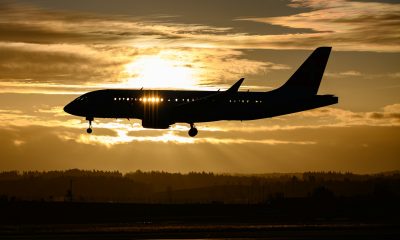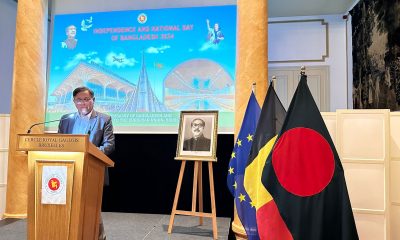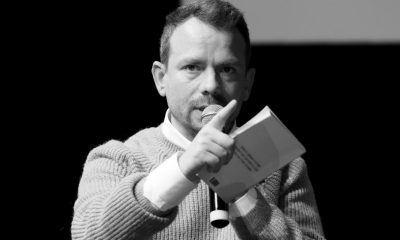אַרקטיש
#Nornickel - לעצטע אַקסידענט כיילייץ די געפאַר פון ינדאַסטריאַלייזינג די # אַרקטיש

 Just weeks after the worst industrial accident ever to hit the Arctic region אַנלישט 21,000 tonnes of diesel from one of Norilsk Nickel’s thermal power plants on a large swath of the surrounding Arctic wilderness, the mining giant has קליימד that the lion’s share of the spilled fuel has been collected. The company, according to its president Vladimir Potanin – who’s also Russia’s richest man, worth over $25 billion - is now trying to figure out how to dispose of the pollution without further harming the environment, שרייבט קאָלין סטעווענס.
Just weeks after the worst industrial accident ever to hit the Arctic region אַנלישט 21,000 tonnes of diesel from one of Norilsk Nickel’s thermal power plants on a large swath of the surrounding Arctic wilderness, the mining giant has קליימד that the lion’s share of the spilled fuel has been collected. The company, according to its president Vladimir Potanin – who’s also Russia’s richest man, worth over $25 billion - is now trying to figure out how to dispose of the pollution without further harming the environment, שרייבט קאָלין סטעווענס.
But we shouldn’t celebrate just yet—Nornickel’s pronouncement that “most” of the fuel has been collected should be taken with a grain of salt, particularly given the company’s history of covering up accidents. Siberian authorities and environmental groups alike have געווארנט that the industrial disaster would likely take years to fully clean up און that measures implemented by Nornickel would “help collect only a minor part of the pollution”. What’s more, floating dams intended to control the leak זענען either “ineffective or installed too late”, meaning that the spilled fuel managed to reach Lake Pyasino, a major source of water in the region.
Even if Nornickel has now managed to stop the contaminated water from flowing out of Lake Pyasino into the Pyasina River and, almost ינעוואַטאַבלי, into the Arctic Ocean, the spill has already caused untold devastation to the sensitive Arctic environment and left dead birds and fish in its wake. It’s also left us with two principal lessons: that Nornickel hasn’t changed its spots after a long history of environmental mismanagement, and that the industrialization of the Arctic may have ruinous consequences for the far north’s unique ecosystem.
Par for the course for Potanin’s Nornickel
The recent accident, קאַמפּערד to the 1989 Exxon Valdez disaster, may have exceptionally severe consequences—but it’s just the latest example of Nornickel playing fast and loose with environmental safety. The firm, געבויט on the backs of gulag prisoners, has earned Norilsk a שעם as one of the world’s most polluted cities as Nornickel’s smelters have sent clouds of toxins billowing across the Arctic. Unsurprisingly, life expectancy in Norilsk is significantly ונטן דורכשניטלעך.
In 2016, meanwhile, the mining giant spent days פארלייקענען reports of an incident—even while the nearby Daldykan River had turned blood red. After pitiful attempts to brush off the situation—including ludicrous claims that the vermilion colour was due to naturally-occurring clay in the river—Nornickel finally אַדמיטאַד that one of the filtration dams at its Nadezhda plant had sent iron slurry overflowing into the waterway.
Despite occasional pledges to clean up its act, Nornickel has געוויזן little genuine commitment to reducing its environmental footprint, something which the recent oil spill has highlighted. Infuriated by the accident—and by a catastrophic two-day reporting פאַרהאַלטן, in which Nornickel employees tried to repair the leak themselves rather than informing authorities—Russian president Vladimir Putin didn’t hesitate to לייגן the blame directly at the door of the firm’s billionaire owner, Vladimir Potanin.
Potanin, who has run Nornickel for the past 25 years, has built his fortune thanks to the company’s generous dividends. According to documents, in 2020 alone he received almost $1.4 billion, on top of a $90 million salary. At the same time, investment in the company’s Soviet-era equipment has סטאַגנייטיד, with over 70% of the plant’s facilities being outdated. The last revamp occurred in 1972, while the mining and metallurgical complex in Norilsk itself was built in the late 30s.
As one independent director at Nornickel explained to the FT, ““They don’t want to invest in modernisation, they try every which way to block even the most reasonable initiatives from the state.” He joins a chorus of voices from within the top rungs of the company’s board demanding that more money be invested in staving off such accidents – so far, their calls have not been heard by Potanin. Moreover, Russia’s environmental watchdog had געווארנט the mining giant back in 2016 about problems with the tanks. Officially, the collapsed tank was decommissioned to undergo a major refurbishment, but in reality, the company never stopped using it—something which Russian investigators believe may קאַנסטאַטוט פאַרברעכער נעגלאַדזשאַנס.
For one official at the WWF, it וואלט been obvious to Norilsk management that “you have to replace metal oil containers over the course of 40 years”. The firm’s management, however, is headquartered in Moscow rather than on the ground in Siberia, calling into question their visibility on day-to-day issues, while reports claim Potanin manages the company either from his Moscow mansion or his home on the French Riviera. His lack of experience in the metals and mining sector before gaining a controlling stake in Norilsk Nickel in the 1990s’ notorious loans-for-shares scheme has also been פינגערעד as one reason why the firm has been slow to modernise creaking equipment.
It’s no surprise that calls for Potanin to step down have multiplied in recent weeks, with generous media coverage dedicated to his high flying personal life, which includes a small fleet of private jets bought on the company dime.
What lessons for the Arctic?
The oil spill— which may cost Nornickel and its owner Vladimir Potanin $ קסנומקסבן —is likely to impress new urgency on Russian industrialists to audit crumbling infrastructure and put better environmental protection plans in place. But it should also be the catalyst for wide-ranging discussions about the extent to which the Arctic, a vital and largely heretofore unspoiled region, is being industrialized.
This March, the Kremlin published a 15-year masterplan ארויפלייגן its ambitions to develop the polar region. At the centre of it was the development of the Northern Sea Route. The passage, which takes advantage of newly ice-free waterways to skirt Russia’s Arctic coast, has seen explosive increases in traffic in recent years as it cuts 40% of the travel time between Europe and Asia versus sailing via the Suez Canal. Other priorities outlined in the comprehensive scheme include building gargantuan nuclear-powered icebreakers to crack open year-round shipping lanes, offering tax rebates for drilling for fossil fuels and encouraging people to settle in the Arctic region.
Russia’s not alone in finding the Arctic a tempting target for industrialisation, with its convenient waterways and mineral-rich soil. Back in 2008, the European Commission’s first Arctic policy argued that the region’s environmental vulnerability was no reason not to exploit it, including by drilling for hydrocarbons. The European institutions now pay more lip service to protecting the far North’s fragile ecosystem, but still זוכן out economic opportunities in the Arctic.
The images of a sea of fuel making its way towards the Arctic Ocean in the wake of Nornickel’s latest accident have shone a fresh spotlight on the perils of putting profit over protecting the Arctic environment. How many more accidents will it take to convince policymakers to revamp their Arctic policies?
שער דעם אַרטיקל:
-

 נאַטאָקסנומקס טעג צוריק
נאַטאָקסנומקס טעג צוריקאייראפעאישע פארלאמענטארן שרייבן צום פרעזידענט בידען
-

 אַוויאַטיאָן / ערליינזקסנומקס טעג צוריק
אַוויאַטיאָן / ערליינזקסנומקס טעג צוריקאַוויאַטיאָן פירער קאַנווינד פֿאַר די EUROCAE סימפּאָסיום, מאַרקינג אַ צוריקקער צו זיין געבורט אָרט אין לוסערנע
-

 קאַזאַקסטאַןקסנומקס טעג צוריק
קאַזאַקסטאַןקסנומקס טעג צוריקהאר קאַמעראָן ס וויזיט דעמאַנסטרייץ וויכטיקייט פון סענטראַל אזיע
-

 מענטשנרעכטקסנומקס טעג צוריק
מענטשנרעכטקסנומקס טעג צוריקדי positive סטריידז פון טיילאַנד: פּאָליטיש רעפאָרם און דעמאָקראַטיש פּראָגרעס
























